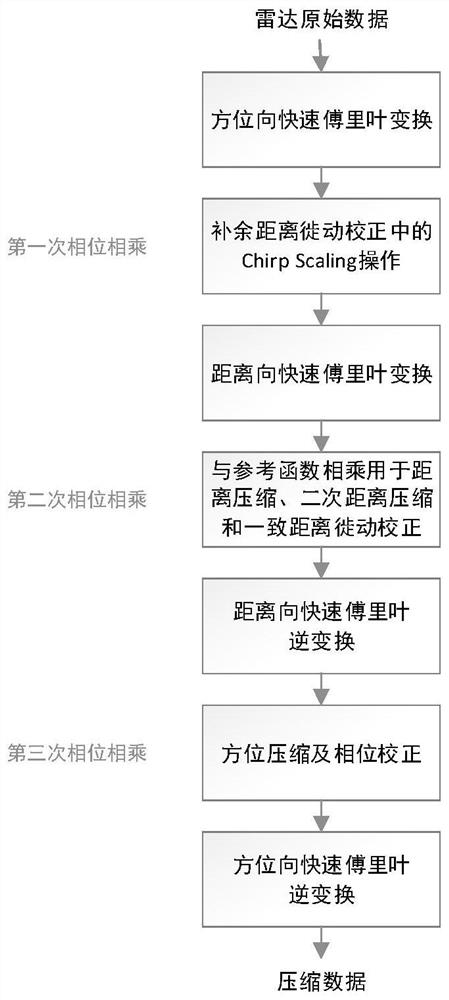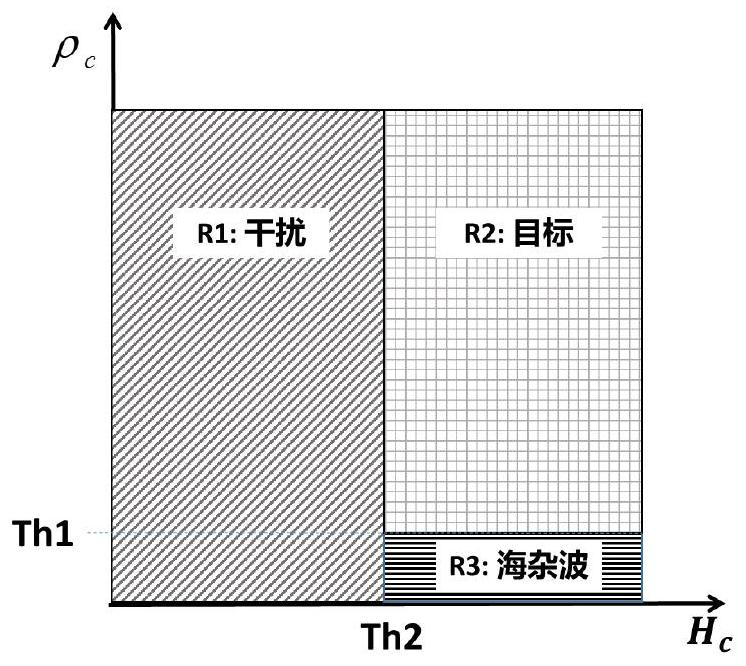Sea surface adaptive imaging method based on SAR (Synthetic Aperture Radar) sub-view analysis
An imaging method and self-adaptive technology, applied in the direction of reflection/re-radiation of radio waves, instruments, measuring devices, etc., can solve problems such as interference, high intensity, affecting imaging quality, etc., to achieve effective separation, suppression of interference and sea clutter , the effect of improving the signal-to-noise ratio
- Summary
- Abstract
- Description
- Claims
- Application Information
AI Technical Summary
Problems solved by technology
Method used
Image
Examples
Embodiment
[0049] In order to verify the effectiveness of the scheme of the present invention, the following experiments were carried out.
[0050] 2 slices were cropped from the CS imaging results of the GF-3 satellite hyperfine strip ocean scene ( Figure 4 In (a) and (c)), the slice size is 1200 by 1200 pixels. The pixel spacing in the range and azimuth directions is 1.124m and 1.713m, respectively. The slices contain ship, azimuth blur, and sea clutter signals. Through the treatment of the method of the present invention, obtain such as Figure 4 Results of (b) and (d). From the visual effect, the azimuth fuzzy signal is suppressed, and the ship target is more prominent.
[0051] In order to quantitatively verify the advantages of the present invention, the strongest scattering points (S1, S2, S3, S4) of each ship and the strongest points (A1, A2, A4) of point-like azimuth fuzzy signals were selected from the two slices respectively. , A5), distributed azimuth fuzzy signal area A3...
PUM
 Login to View More
Login to View More Abstract
Description
Claims
Application Information
 Login to View More
Login to View More - R&D
- Intellectual Property
- Life Sciences
- Materials
- Tech Scout
- Unparalleled Data Quality
- Higher Quality Content
- 60% Fewer Hallucinations
Browse by: Latest US Patents, China's latest patents, Technical Efficacy Thesaurus, Application Domain, Technology Topic, Popular Technical Reports.
© 2025 PatSnap. All rights reserved.Legal|Privacy policy|Modern Slavery Act Transparency Statement|Sitemap|About US| Contact US: help@patsnap.com



